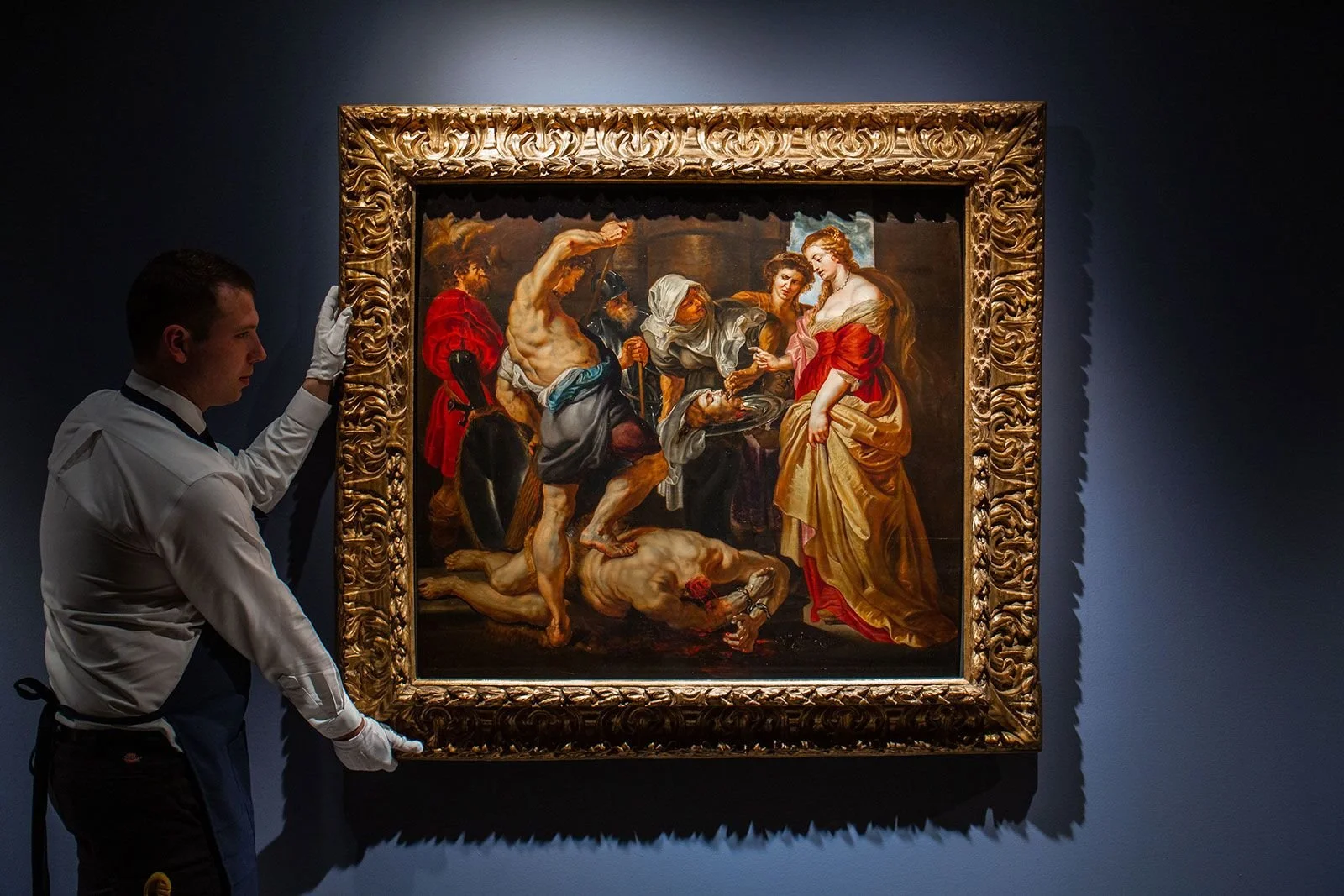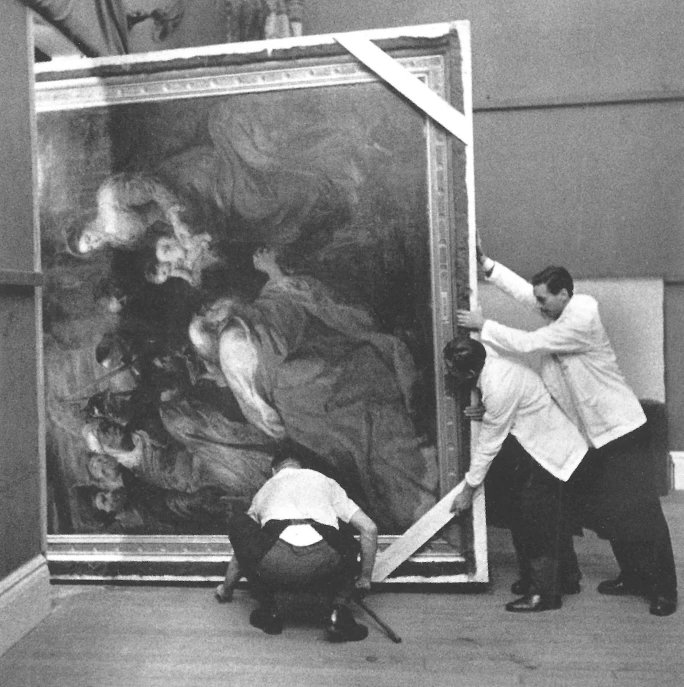Going, Going, Gone: Making Room for the Rubens
going, Going, Gone: Making Room for the Rubens
Recalling the extraordinary preparations made for the auction of a monumental painting by Peter Paul Rubens at Sotheby’s London on June 24th 1959.
When the heirs of Hugh Grosvenor, 2nd Duke of Westminster, decided to sell “The Adoration of the Magi”—a monumental canvas painted by Rubens from 1633-34 as an altarpiece for a convent in Louvain, Belgium—it was obvious that special arrangements would be required. Measuring 13 feet 9 inches tall by 10 feet 6 inches wide, the artwork could not fit through the sequence of doors on the route to Sotheby’s main gallery on New Bond Street. As the most important Old Master painting to be put on the block in a generation, a solution was essential.
Porters maneuver the painting through a temporary opening made in a gallery wall. Photo: Courtesy of Sotheby’s.
Porters devised a plan to winch the baroque masterpiece up from the Mayfair building’s basement via a temporary slot in one of the gallery floors before passing it through an opening made in one of the walls. The daring endeavor was successfully executed the day before the auction, but their work was not yet over. Armed with a bank of steaming, newly purchased electric kettles, staff had to keep vigil overnight to maintain optimal humidity for the huge picture.
The Rubens was installed in King’s College Chapel, Cambridge. Beneath the great east window. Completed in 1531. Photo: Miscellany/Alamy Stock Photo
Fortunately, these efforts paid off. After a determined round of bidding by the art dealer Leonard Koetser on behalf of an anonymous collector, the Rubens sold for £275,000—a new world record for any painting at auction. The unknown identity of the buyer briefly raised concerns that the work might leave the country, but it soon emerged that the mystery purchaser was Alfred Edward Allnatt, a British industrialist and art collector.
The Sotheby’s 1959 Auction Catalog in which works were reproduced in black and white. Photo: Born XDS
Two years later, in 1961, Allnatt offered the masterwork to King’s College, Cambridge—a decision that triggered yet more complicated construction. To install the painting in the college’s chapel, the height of the altar floor had to be lowered to prevent the work from obscuring the stained glass windows. These alterations remain controversial to this day but served to restore the altarpiece to its original purpose.




